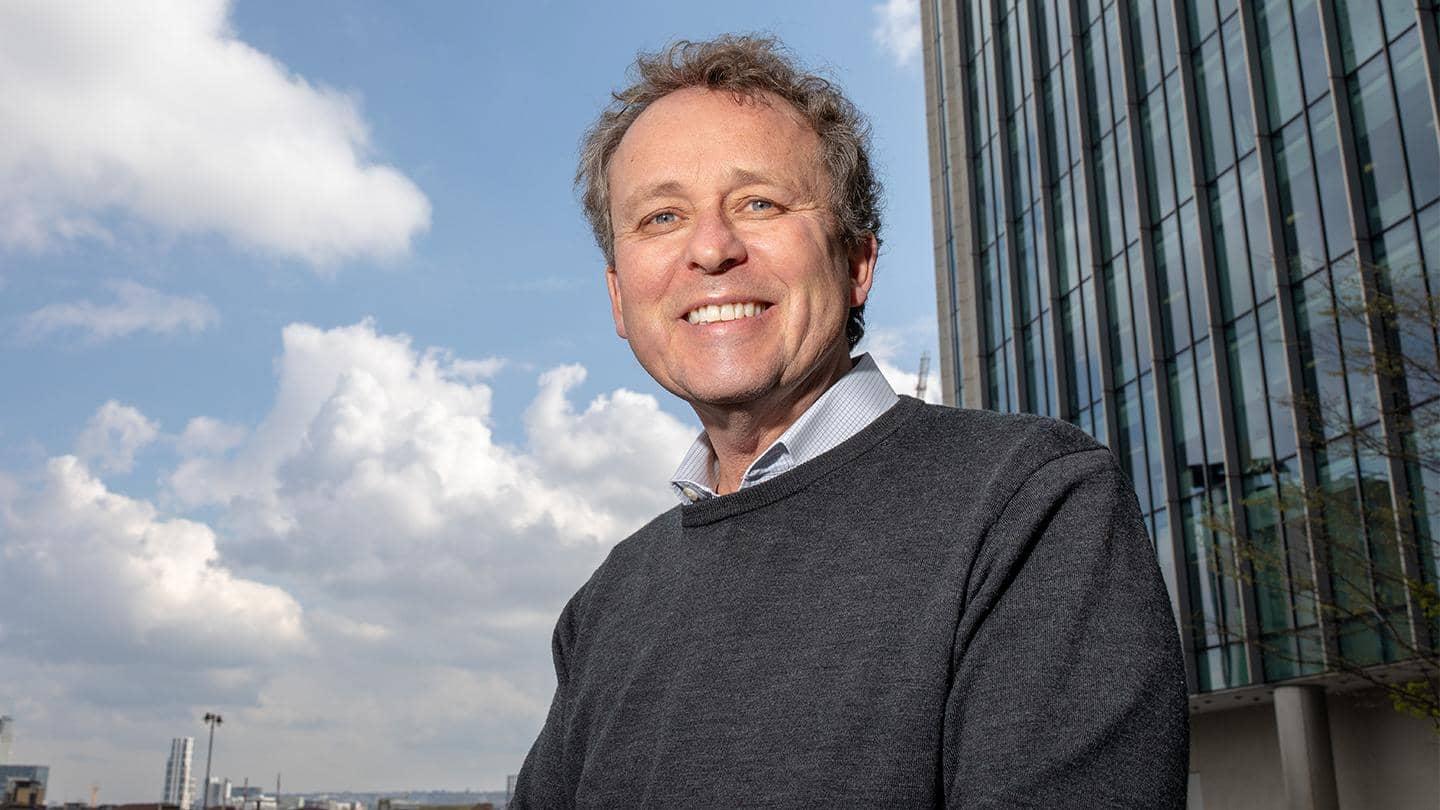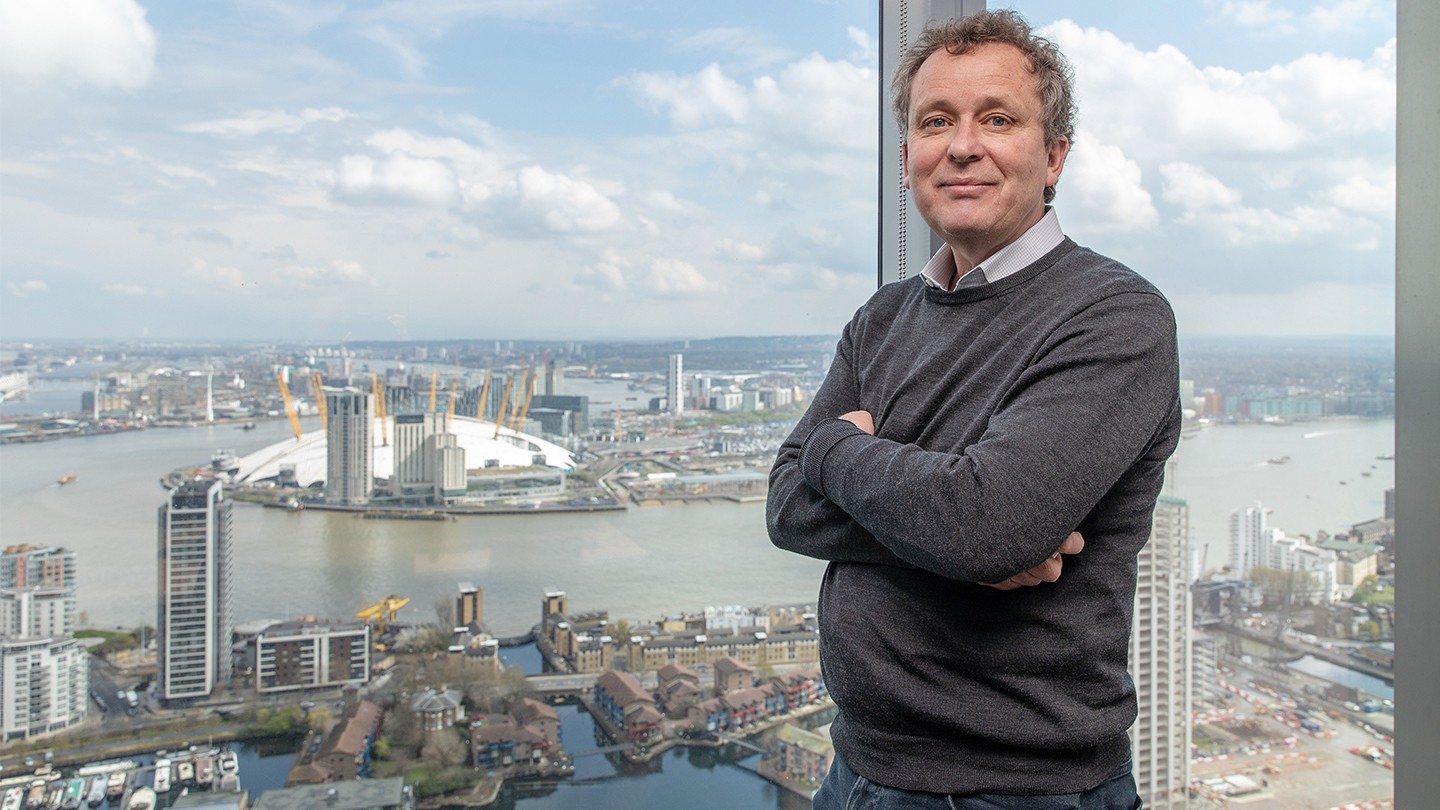
Innovation
Insights: the story behind Barclays’ innovations
Steven Roberts, Barclays’ Strategic Transformation Director, tells us the story behind the bank’s innovations, how colleague engagement can lead to experimentation and unexpected results – and why Barclays’ Eagle Labs are the modern equivalent of 18th century coffee houses.
“It looks accidental,” says Steven Roberts, “but it keeps happening. You realise your staff are your window into the world, in the same way your kids are. As long as you can tune your ears to your colleagues’ voices and put together the evidence, they’re telling you most of the answers. So, it’s not totally by accident. You find these things by looking and listening to what the world is telling you.”
Roberts’ innovations as Strategic Transformation Director for Barclays have often followed a pattern: programmes aimed at getting the best out of Barclays colleagues have morphed into wide-ranging public services.
In 2013, a scheme to help branch workers familiarise themselves with mobile technology became Barclays Digital Eagles – aimed at digitally upskilling the public – and then Eagle Labs – a nationwide network of co-working spaces that launched in 2016. A meet-up to link bank technologists and business specialists became the public-facing AI Frenzy. And the Eagle Labs system itself is in the midst of transformation, with the involvement of Barclays UK Ventures.
Roberts is no stranger to experimentation. With a Cambridge PhD in Geophysics, he joined Barclays 29 years ago and rose through a variety of roles across Barclays’ retail and investment banks, including Head of Risk and Head of Strategy and Planning, to become the Chief Operating Officer for Barclays’ UK Retail Bank
With the arrival of Ashok Vaswani as CEO of Barclays UK, Roberts’ focus changed again. “When Ashok came in, he said: ‘I like you, you come along with me and do digital transformation.’ Neither of us knew exactly what that meant at the time, but a lot of the early focus was about taking colleagues with us on the journey – working out how to make colleagues feel happy about digital.”
Blue-sky thinking in the desert
It was quite a change for Roberts, who went from being in charge of 5,000 people as COO to “just me and my PA, out in the desert thinking ‘what is this about’.” But the time was ripe for blue-sky thinking, and Roberts, who is a policy fellow of Cambridge University’s Centre for Science and Policy and a Visiting Professor at the University of Huddersfield, was the ideal man to oversee transformation.
Roberts remembers those months as a time when smartphones began to transform banking: “We did some experiments like putting free wifi into the branches – which was a novelty at the time. We bought the biggest bandwidth we could and left it on 24 hours a day for anyone to use, whether they were a Barclays customer or not. And it leaked out of the building.
“The interesting thing that happened was that we picked up on social media how kids were meeting at our branches and taxi ranks were moving to be outside our building – so the reflection was that we’d done something where people wanted to come to our buildings, rather than they needed to.”
If a discovery is said to be an accident meeting a prepared mind, Roberts was primed to take advantage: “It was accidental – much of the stuff we’ve done has been accidental, though born of experiments and adapting to the information gained during those experiments.
The reason we opened up the wifi was to try to get people to take up mobile banking and use our products and services – but we didn’t at the time allow staff to have mobile phones in the branch, and if you didn’t have wifi, you had to give customers cards to tell them how to download mobile banking at home. But with it in branch, the conversion rates were entirely different. You open it, download it and people will use it forever.”
The birth of the Barclays Eagle Lab
This experimental approach was also behind the birth of Barclays Eagle Labs. Roberts remembers how Barclays implemented what at the time was the largest company purchase of iPads in the world, when 10,000 Barclays blue iPads were handed to staff “as part of a statement that we were up on technology and serious about it.
“We almost thought ‘that’s job done now, this digital transformation game is easy’,” he says. “But the weird thing was that only about 20% of the staff were using them, and that tended to be the younger staff. People just loved carrying them around without using them. And when we asked why they weren’t using them, colleagues said things like they didn’t know how it worked, or they were afraid to break it, or they were embarrassed to ask someone how to use it
"This was a really interesting insight that puzzled us. We thought that if the staff aren’t comfortable with the technology, how are we going to persuade the customers that they should adopt it?
“We thought that we could use the younger people in the organisation as the equivalent of the grandchildren who show their grandparents how to use a phone. So, I persuaded people in the bank to let me have 20 people for six months, and I mapped out on the wall how one of these 20 people could visit every one of our branches. And they would sit down with everyone in the branch and tutor them on how to use their phones and iPads and show them what possibilities there were within that. We called these 20 people ‘Digital Eagles’.”
Within two months, those 20 Eagles had recruited 3,000 volunteers within the bank. “As this grew and grew,” says Roberts, “all sorts of interesting things started happening. Organisations started approaching us. For example, CoderDojo, who offer space for children to code, came to us to ask if they could use our branches, and we said: ‘We have loads of space. When the branch closes in the evening, we’re empty’. So, we bought a load of blue beanbags and started running what we called Code Playground, again using Barclays Digital Eagles.”

Barclays’ Head of Culture and Transformation and Chief Strategic Officer, Steven Roberts
“At the same time, with less people visiting our branches to make transactions, there was a lot of thought about how we could use our branches to be more useful to the community. I persuaded the bank that we should give this new idea of an Eagle Lab, Barclays’ co-working spaces for digital entrepreneurs, a try. So on 4 December 2015, we opened the first one, upstairs in a branch at Cherry Hinton, Cambridge.
“At the beginning, it was a space for 3D printing. Companies who visited were keen to work there: part of the reason for that was the lab, but part of it was because we could connect them to the ecosystem that is the rest of the bank. If you’re a start-up, you need access to large corporates or groups of customers, and we knew those people.”
Growing one by one, tweaked each time with learned information, the Eagle Lab network now numbers more than 20, with many more in the pipeline. Some are becoming sector-specific mini-incubators with genuine distinction, focused on the industries where the UK has played a significant role – as highlighted by the UK government’s industrial strategy.
A LawTech lab in Notting Hill, London, involves the Law Society and 14 City law firms (“they had their own incubators that they kept secret from each other, but there were a lot of tech problems that needed solutions for the entire industry – and Barclays can act as a facilitator with no axe to grind”). Other specialist Eagle Labs include spaces for AI in Cambridge and aviation technology in Cranfield.
“The point of Eagle Labs,” says Roberts, “is solving the problems of our customers who want to grow really fast. In doing that, of course, we hope the customers will love us and become and remain customers as they grow.”
He likens the labs to Barclays’ beginnings in the coffee houses of London, where the bank grew “because we happened to be in a place where we could convene the merchants and the customers. What I hope we’re doing with the labs is reinventing that convening for the 21st century – being useful to corporates, to the public, to growth companies. And we want to be inclusive to the whole community – this is for schoolchildren, for pensioners, to enrich the world around us.”
Inclusion and community
Roberts’ wider innovations have always considered inclusion and community as key. “We’re a universal bank,” he says, “we can’t just go after cool guys running start-ups – we serve everyone, from millennials to families to retirees. His first focus for transformation was, he says, making Barclays the most accessible company in the FTSE for elderly and disabled customers.
Talking ATMs, SignVideo and the Barclays age simulation suit were developments to rise out of this strategy. “There’s a straightforward business case for this,” says Roberts, “in that much of Britain’s wealth is with the elderly, but there’s also a definite moral and emotional case for it too.”
Roberts says his team has identified 50 cities ready for Barclays Eagle Labs: “When we first started the labs, some outside the bank were sceptical of what we were trying to do, but that’s all changed. This year we’ve won a tender from a city council to run an Eagle Lab, it will be the first space in their community for creative, digital and knowledge-based start-ups.”
The programme is being further boosted by the involvement of Ben Davey, CEO of Barclays UK Ventures and Barclays UK Ventures: “What Ventures has done is turbocharge what we’re trying to do with the labs. Ben’s links into the corporate bank and the wider group have helped enormously. Barclays UK Ventures has accelerated the expansion of the lab network and also given some focus on the types of lab we should focus on.”
And what’s the next focus? “The skills revolution,” says Roberts. “We have to look at whether Britain has the right skills for the future in and see what we can do to help that. Technology has changed, but more significant to me are the changes in the way we work and how we work.
"I have sons in their twenties who have already worked for twice as many companies as I have in my life, but they’re the ones who are going to need to get bank products. There are some products and services we provide now that are configured for a different age.”
If his years in strategic transformation are any guide, Roberts will be ready to develop new products and help growing businesses in surprising – if not accidental – ways. “We have the most amazing people here. As long as we say to our colleagues ‘be fabulous – for yourself and your customers’, then some magical stuff will happen.”